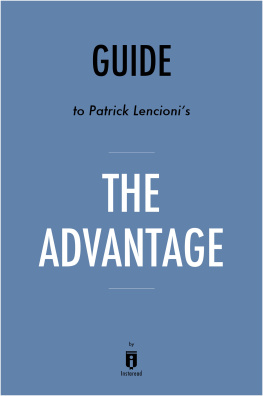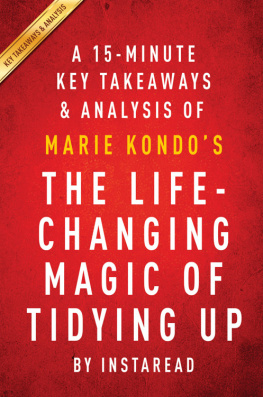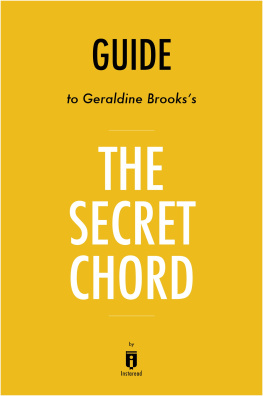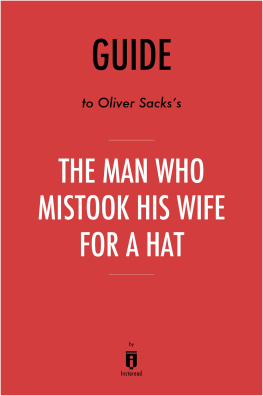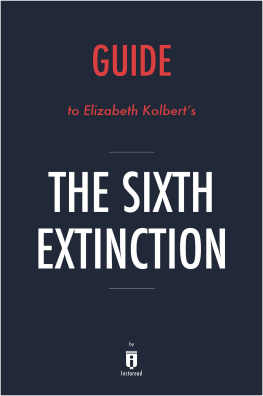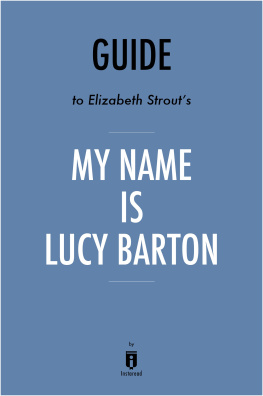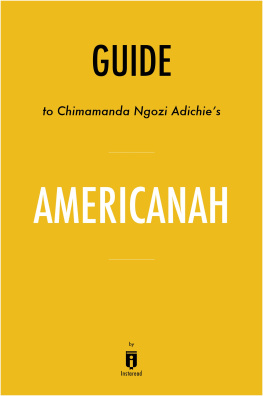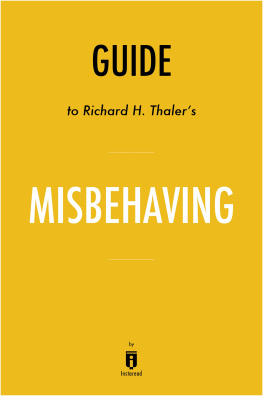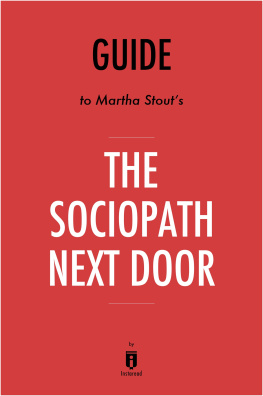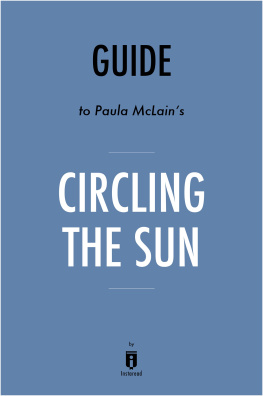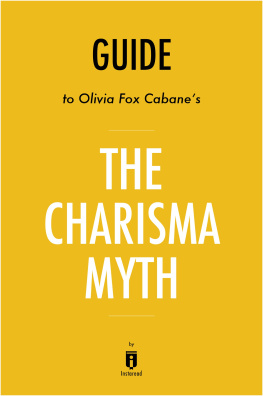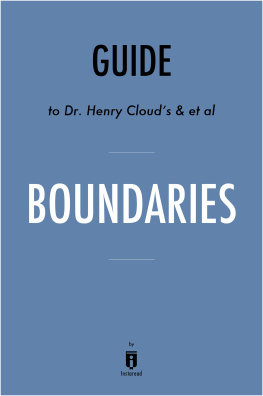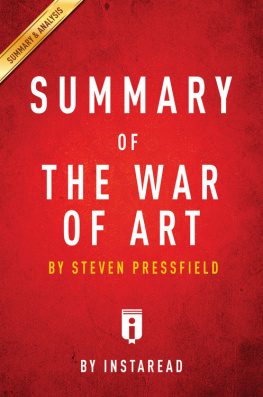Instaread - Guide to Steven R. Gundrys, MD The Plant Paradox by Instaread
Here you can read online Instaread - Guide to Steven R. Gundrys, MD The Plant Paradox by Instaread full text of the book (entire story) in english for free. Download pdf and epub, get meaning, cover and reviews about this ebook. publisher: Instaread, genre: Romance novel. Description of the work, (preface) as well as reviews are available. Best literature library LitArk.com created for fans of good reading and offers a wide selection of genres:
Romance novel
Science fiction
Adventure
Detective
Science
History
Home and family
Prose
Art
Politics
Computer
Non-fiction
Religion
Business
Children
Humor
Choose a favorite category and find really read worthwhile books. Enjoy immersion in the world of imagination, feel the emotions of the characters or learn something new for yourself, make an fascinating discovery.
- Book:Guide to Steven R. Gundrys, MD The Plant Paradox by Instaread
- Author:
- Publisher:Instaread
- Genre:
- Rating:5 / 5
- Favourites:Add to favourites
- Your mark:
- 100
- 1
- 2
- 3
- 4
- 5
Guide to Steven R. Gundrys, MD The Plant Paradox by Instaread: summary, description and annotation
We offer to read an annotation, description, summary or preface (depends on what the author of the book "Guide to Steven R. Gundrys, MD The Plant Paradox by Instaread" wrote himself). If you haven't found the necessary information about the book — write in the comments, we will try to find it.
Guide to Steven R. Gundrys, MD The Plant Paradox by Instaread — read online for free the complete book (whole text) full work
Below is the text of the book, divided by pages. System saving the place of the last page read, allows you to conveniently read the book "Guide to Steven R. Gundrys, MD The Plant Paradox by Instaread" online for free, without having to search again every time where you left off. Put a bookmark, and you can go to the page where you finished reading at any time.
Font size:
Interval:
Bookmark:
Guide to
Steven R. Gundrys, MD
The Plant Paradox
The Hidden Dangers in Healthy Foods That Cause Disease and Weight Gain
by
Instaread
Please Note
This is a companion to the original book.
Copyright 2017 by Instaread. All rights reserved worldwide. No part of this publication may be reproduced or transmitted in any form without the prior written consent of the publisher.
Limit of Liability/Disclaimer of Warranty: The publisher and author make no representations or warranties with respect to the accuracy or completeness of these contents and disclaim all warranties such as warranties of fitness for a particular purpose. The author or publisher is not liable for any damages whatsoever. The fact that an individual or organization is referred to in this document as a citation or source of information does not imply that the author or publisher endorses the information that the individual or organization provided. This concise companion is unofficial and is not authorized, approved, licensed, or endorsed by the original books author or publisher.
Table of Contents
The Plant Paradox: The Hidden Dangers in Healthy Foods That Cause Disease and Weight Gain (2017) by Steven R. Gundry, MD, reveals how eating plants can actually be harmful to health. Gundrys Plant Paradox diet explains how to prepare and eat plant foods when theyre in season and in the right amounts to achieve optimal health.
The rise in obesity, autoimmune diseases, allergies, and many other health problems has been caused by plant proteins called lectins. While most people have never heard of them, lectins are toxins that plants produce to protect themselves from predators. Although people need to eat plants to be healthy, they often eat plants the wrong way and end up getting sick. This is the plant paradox.
Lectins are often described as sticky proteins that bind to sugar molecules in the intestinal tract, interrupt messages that cells send to each other, and trigger an inflammatory response in the body. Gluten is one kind of lectin, but eliminating gluten wont solve the problem. In fact, cutting out gluten can lead people to replace it with foods even higher in lectins, such as gluten-free flours.
To stop lectins and other toxins from causing harm, the body produces stomach acid and intestinal mucus, in addition to hosting trillions of good microbes in the mouth, intestinal tract, and on the skin. This microbe mixture is called the holobiome. It helps humans digest food and protect against toxins, but lectins can still breach the intestinal wall and enter the bloodstream. When a breach occurs, its called leaky gut. It causes inflammation, weight gain, and autoimmune diseases.
Before the advent of modern agriculture, humans were taller and had bigger brains. Then they began domesticating grains and beans, which contain more lectins. The human body wasnt prepared for this dietary change. Genetically modified organisms (GMOs) have further disrupted the human gut and contributed to human vulnerability to lectins.
Today humans are more sensitive to lectins than ever before. People in the West eat more processed foods and grains and are exposed to a wide range of synthetic chemicals contained in foods and other consumer products. These disruptors make it more difficult for the body to process lectins. The disruptors include broad-spectrum antibiotics, painkillers, and artificial sweeteners.
Humans live in a symbiotic relationship with their gut microbes. When healthy microbes dominate, they feel healthy. When the bad ones prevail, people get sick. Fortunately, its possible to heal a leaky gut. To do so, an individual must commit to the Plant Paradox Program, which feeds the good or healthy microbes. Unlike some other low-carbohydrate diets, the Plant Paradox Program doesnt allow for a return to carbs. Instead, it helps people make permanent changes to their diets that can help prevent and reverse disease.
The Plant Paradox Program emphasizes several points. To begin, what people dont eat is more important than what they do eat. Next, its important to feed healthy microbes in the body. Finally, the adage you are what you eat should be extended to the food sources of those food sources. That is, if people eat grain-fed animals, they may as well be consuming those grains.
Phase 1 of the program is a three-day cleanse that eliminates dairy, grains, fruits, sugar, eggs, soy, and nightshade and root vegetables to help repair the gut and revamp gut bacteria. Phase 2 is a six-week program. This repair phase eliminates lectins from grains and legumes, including corn and soybeans; GMO foods; saturated fats; whole-grain products; artificial sweeteners; industrial-raised poultry and livestock; and farm-raised fish. Instead, dieters eat leafy greens, especially from the cabbage family, and omega-3 fats, especially fish oil and avocados. The repair phase sets a daily limit of eight ounces of animal protein, ideally wild-caught fish. After at least six weeks, in an optional Phase 3, dieters can try reintroducing some nightshade vegetables, with seeds and skins removed, and pressure-cooked legumes. Daily animal protein should be limited to four ounces, and dieters are encouraged to fast intermittently. This regime will neutralize the harmful effects of the plant paradox.
- Health myths pervade the way people think about food.
- Plant proteins called lectins, produced as a defense mechanism against predators, are destructive to human health.
- The key to navigating plant foods is learning which ones are healthy and how to prepare and eat them when theyre in season.
- Most health problems have tiny causes. The microbes that make up the holobiomethe mixture of trillions of organisms in the mouth, intestinal tract, on the skin, and even in the air around the bodyare largely responsible for whether a person remains healthy or gets sick.
- Gluten is one type of lectinand only one. Wheat germ agglutinin (WGA), which penetrates the gut and causes inflammation, should be avoided.
- There are seven deadly disruptors that make it harder for the body to defend itself against lectins. These disruptors include broad-spectrum antibiotics, painkillers, stomach acid blockers, artificial sweeteners, endocrine disruptors, GMOs, and blue light from electronic devices.
- What people dont eat is more important than what they do eat.
- Health derives from a healthy microbe population. Bad microbes can be starved by denying them sugar, refined carbs, and saturated fat.
- Fruits are like candy. Fruits instruct the body to store fat.
- Individuals should eat a mostly vegetarian diet with wild-caught seafood as the main source of animal protein.
- A pressure cooker will eliminate lectins in legumes, nightshade vegetables, and squashes.
Dr. Steven Gundry is the author of The Plant Paradox and a practitioner of the Plant Paradox Program.
Clarence V. is a patient of Dr. Gundrys who cured his type 2 diabetes with the help of the Plant Paradox Program. Clarence had his diabetes under control, but when he was diagnosed with celiac disease and started eating gluten-free products, his diabetes came back.
Tony, another patient of Dr. Gundrys, suffered from vitiligo, an autoimmune condition in which the skin loses its pigmentation. When Tony started on the Plant Paradox Program, pigmentation returned to his skin. It was Tonys case that inspired Dr. Gundry to research and identify the cause of inflammation as lectins.
Usher Raymond IV (Usher), the American musical artist and actor and a patient of Dr. Gundrys, successfully used the Plant Paradox Program to meet his weight-loss goals.
Next pageFont size:
Interval:
Bookmark:
Similar books «Guide to Steven R. Gundrys, MD The Plant Paradox by Instaread»
Look at similar books to Guide to Steven R. Gundrys, MD The Plant Paradox by Instaread. We have selected literature similar in name and meaning in the hope of providing readers with more options to find new, interesting, not yet read works.
Discussion, reviews of the book Guide to Steven R. Gundrys, MD The Plant Paradox by Instaread and just readers' own opinions. Leave your comments, write what you think about the work, its meaning or the main characters. Specify what exactly you liked and what you didn't like, and why you think so.


